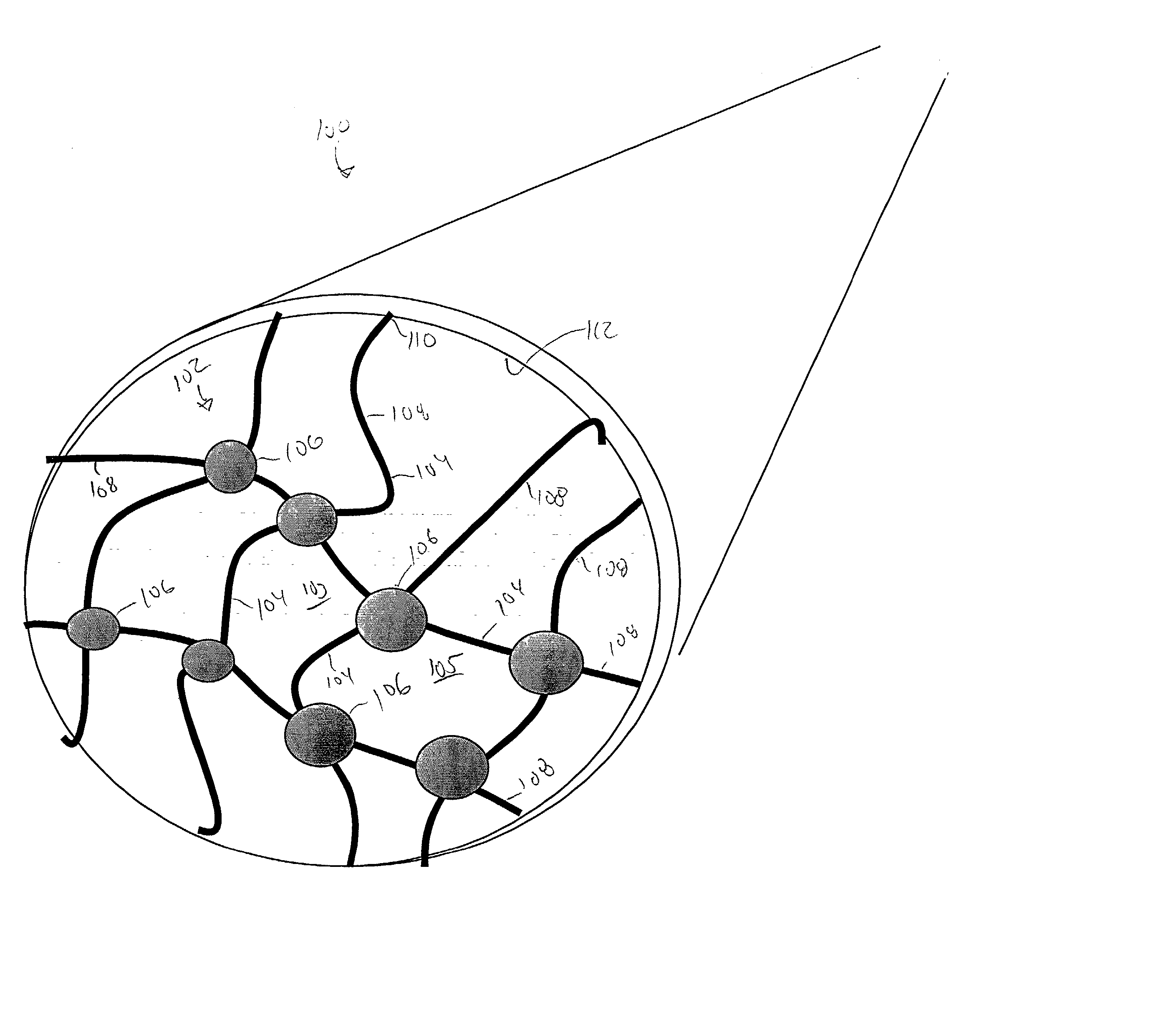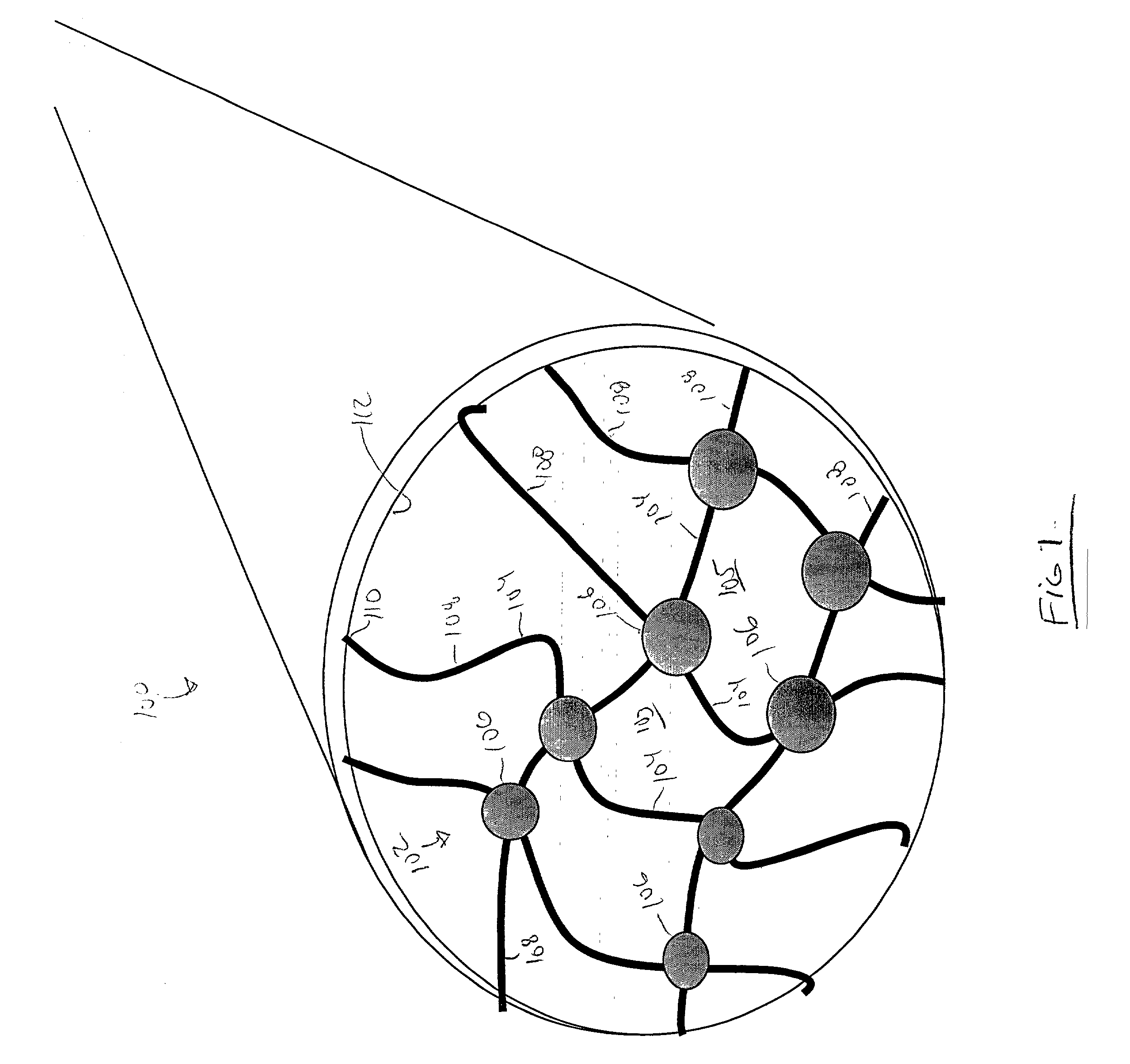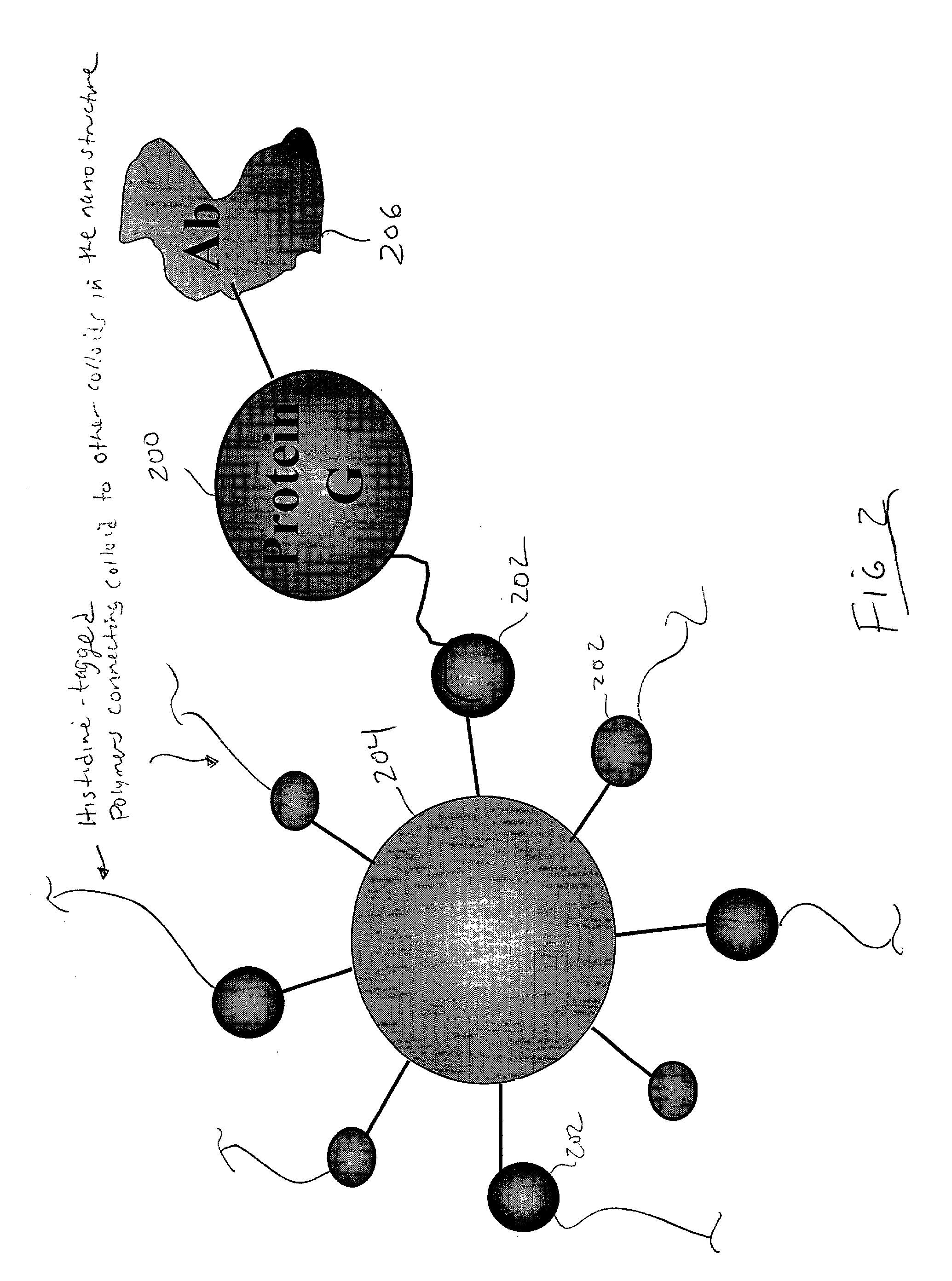Electronic detection of interaction and detection of interaction based on the interruption of flow
a technology of interaction detection and electronic detection, applied in the field of electronic detection of interaction and detection of interaction detection methods based on the interruption of flow, can solve the problems of reducing the effective flow channel diameter of the effective flow channel, inability to achieve the sample preparation process in a chip-scale device, and inapplicability of conventional filters and sample concentrators
- Summary
- Abstract
- Description
- Claims
- Application Information
AI Technical Summary
Benefits of technology
Problems solved by technology
Method used
Image
Examples
first embodiment
[0104] For example a multiple detection location flow channel system is illustrated in FIG. 8A. As illustrated, a series of probe ligands comprising antibodies, denoted Ab 1-10, can each be immobilized directly to the channel surface or included in a separate nano-net surface immobilized in discrete locations along a single flow path 400. A sensing element, such as a pressure sensor or flow rate detector, etc. 402, is positioned adjacent each discrete region that presents a probe ligand. A sample, suspected of containing a target agent, is mixed with a set of nanoparticles that each present an antibody, denoted Ab A-J. In this system, Ab 1 and Ab A each recognize different epitopes on a first specific target pathogen, as do Ab 2 and Ab B for a second target, Ab3 and Ab C for a third target etc. In this way, the analysis of pressure drop profile through a specific channel 400, at a specified locations, can identify which of a variety of target agents is present in the channel and, th...
example 2
[0109] Forming Nanostructures Comprised of Gold Colloids Linked into a 3-Dimensional Network by Interconnecting DNA.
[0110] FIGS. 5A and 5B are drawings that illustrate the strategy.
[0111] As is familiar to those skilled in the art, double stranded DNA that is modified at each end with a biotin moiety can be generated by performing PCR on a DNA template using biotinylated primers. Both 1 kb and 2 kb DNA fragments were generated to allow formation of nanostructures with different pore size. The PCR products were purified on an agarose gel using standard techniques.
[0112] FIG. 11 is a photocopy of a composite of digital photos and cartoons that illustrate the corresponding experiment. This figure shows that a colloid-DNA nanostructure is formed when biotin-SAM-coated colloids are incubated with streptavidin and biotinylated DNA. The formation of colloid-DNA nanostructures is detected by detecting a color change of the colloid and DNA containing solution. It is an inherent property of g...
example 3
[0114] Reconfigurable Nanostructures.
[0115] Self-assembled 3-dimensional structures that are formed from the interaction of nanoparticles and dsDNA were disassembled and reconfigured in situ. The addition of heated water caused the DNA strands to melt or disassociate. Since each DNA strand was only biotinylated at one end, strand melting caused the nanostructure to disassemble. Experiments pictured in FIG. 12 showed that nanostructures were melted when the solutions were heated. These results indicate that nanoparticle-DNA structures can be configured and reconfigured in situ. The results also argue that what is forming are in fact networks rather than non-specific aggregates, which would not be prone to disassemble. Referring still to FIG. 12, on the left (1) is a photocopy of a photograph of a solution containing biotinylated dsDNA, biotin-SAM-coated gold colloids, and streptavidin; (2) is a photocopy of a photograph of a solution containing biotin-SAM-coated gold colloids, and st...
PUM
| Property | Measurement | Unit |
|---|---|---|
| pore size | aaaaa | aaaaa |
| pore size | aaaaa | aaaaa |
| pore size | aaaaa | aaaaa |
Abstract
Description
Claims
Application Information
 Login to View More
Login to View More - R&D
- Intellectual Property
- Life Sciences
- Materials
- Tech Scout
- Unparalleled Data Quality
- Higher Quality Content
- 60% Fewer Hallucinations
Browse by: Latest US Patents, China's latest patents, Technical Efficacy Thesaurus, Application Domain, Technology Topic, Popular Technical Reports.
© 2025 PatSnap. All rights reserved.Legal|Privacy policy|Modern Slavery Act Transparency Statement|Sitemap|About US| Contact US: help@patsnap.com



